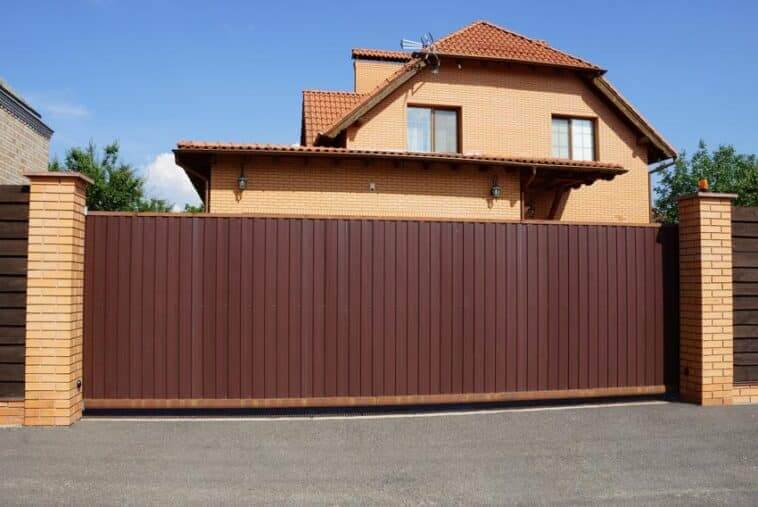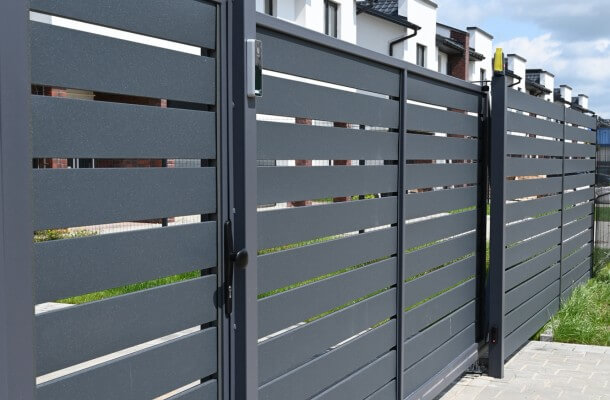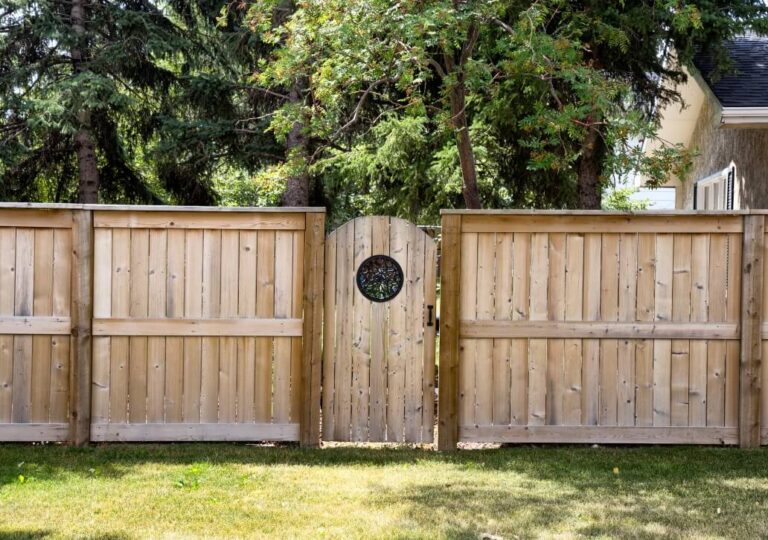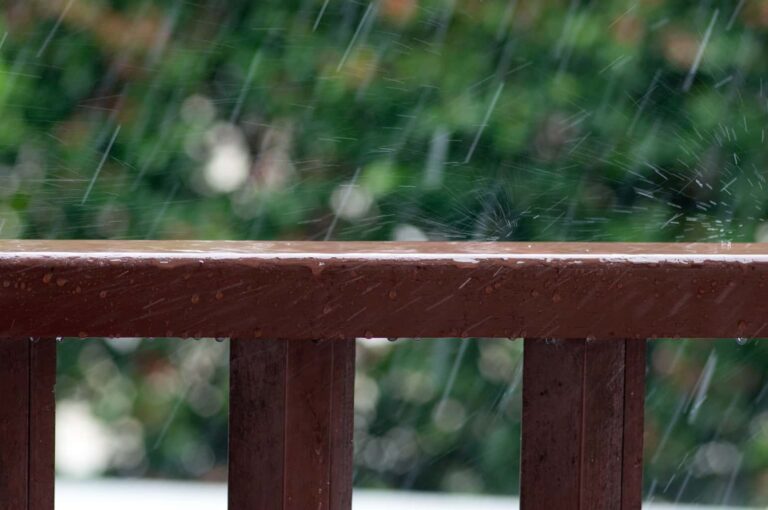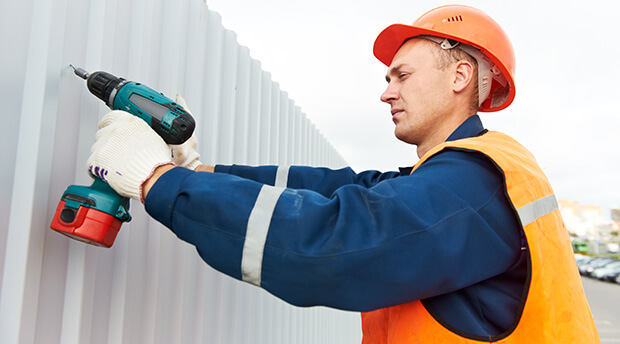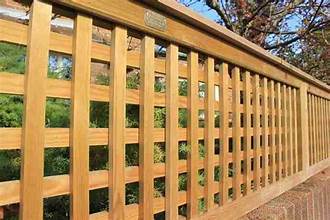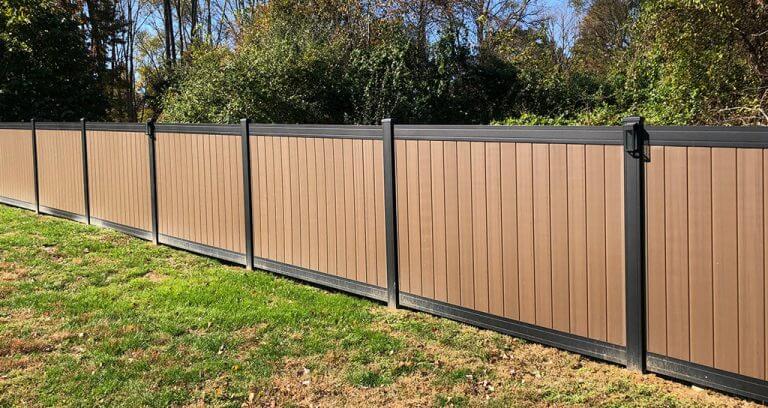Composite fencing offers durability and low maintenance, making it a long-lasting solution. However, it can be more expensive than traditional materials and may have limited color options and designs, potentially limiting customization.
Composite fencing is an increasingly popular choice for homeowners seeking a low-maintenance and durable fencing option.
Its resistance to rot, insects, and weather damage makes it a long-lasting alternative to traditional wood fencing.
Additionally, composite fencing is often made from recycled materials, making it an environmentally friendly choice.
On the downside, composite fencing can be more expensive upfront and may have a limited color and design selection compared to other materials.
Despite these drawbacks, the longevity and reduced maintenance costs of composite fencing can make it a worthwhile investment for many homeowners.

What Is Composite Fencing?
Composite fencing is a type of fencing made from a blend of recycled wood fibers and plastic materials, designed to mimic the appearance of wood while offering increased durability and low maintenance.
It is an eco-friendly alternative to traditional wood or vinyl fencing, with a range of benefits and drawbacks to consider.
Definition Of Composite Fencing
Composite fencing is a modern innovation in the fencing industry that combines the aesthetic appeal of wood with the durability and low maintenance of plastic materials.
It is a versatile and customizable option for property owners looking for a long-lasting fencing solution.
Structure And Composition Of Composite Fencing
Composite fencing is typically composed of a mixture of wood fibers, recycled plastics, and binding agents.
The combination of these elements creates a sturdy and weather-resistant material, offering the look of natural wood without the drawbacks of rotting, warping, or insect damage.
Brief History And Evolution Of Composite Fencing
The concept of composite fencing emerged as an eco-friendly response to the environmental impact of traditional wood fencing and the maintenance challenges associated with it.
Over time, advancements in material technology have led to the development of composite fencing that closely resembles the natural look of wood while providing enhanced strength and longevity.
Advantages Of Composite Fencing
Durability And Longevity
Composite fencing is highly durable and has a long lifespan. The combination of wood and plastic materials creates a fence that is resistant to weather damage, warping, and cracking.
This means the fence will maintain its structural integrity for many years, providing a long-lasting solution for property owners.
Low Maintenance Requirements
Composite fencing requires minimal maintenance compared to traditional wood fences.
It does not need to be painted, stained, or treated with chemicals to prevent rot or decay.
This makes composite fencing a low-maintenance option, saving both time and money for property owners.
Environmentally Friendly Materials
Composite fencing is made from recycled wood fibers and plastic, making it an environmentally friendly option.
Using sustainable materials reduces the demand for virgin wood and plastic, making it a more sustainable choice for eco-conscious property owners.
Variety Of Styles And Designs
Composite fencing comes in a wide range of styles and designs, allowing property owners to choose the option that best suits their aesthetic preferences.
Whether you prefer a modern, sleek design or a more traditional look, there is a composite fencing option to match your vision.
Resistant To Rot, Decay, And Pests
Composite fencing is resistant to rot, decay, and pests, making it a highly durable choice for outdoor applications.
This resistance ensures that the fence will maintain its appearance and structural integrity over time, even in challenging environmental conditions.
Disadvantages Of Composite Fencing
While composite fencing offers a variety of benefits, it also comes with certain drawbacks that are important to consider before making a decision.
Understanding the disadvantages of composite fencing can help homeowners make an informed choice about their fencing options.
Higher Upfront Cost
The initial investment for composite fencing is often higher than traditional wood or vinyl fencing.
This can be a concern for homeowners on a tight budget or those looking to save on installation costs.
Limited Color Options
When it comes to aesthetics, composite fencing may have limited color selections compared to other fencing materials.
This can be a drawback for individuals seeking a specific color or style to match their outdoor space.
Susceptibility To Mold And Mildew
Composite fencing, especially those with wood fibers, may be vulnerable to mold and mildew growth over time, particularly in damp environments. This can lead to maintenance issues and impact its longevity.
Installation Challenges
Installing composite fencing can be more complex than traditional materials due to its weight and specific installation requirements.
Homeowners may require professional help, which can add to the overall cost of the project.
Difficulty In Repairing Damaged Sections
Repairing damaged sections of composite fencing can also be challenging and may require specific expertise and materials.
This can be a concern for homeowners looking for a low-maintenance fencing option.

Frequently Asked Questions
What Are The Benefits Of Composite Fencing?
Composite fencing offers durability, low maintenance, and eco-friendly materials, making it an excellent investment for long-term use.
Is Composite Fencing Resistant To Weather And Pests?
Yes, composite fencing is highly resistant to weather, such as rot, decay, and fading, as well as pests like termites.
How Does The Cost Of Composite Fencing Compare To Traditional Options?
While the initial cost of composite fencing may be higher, its minimal maintenance requirements often result in long-term cost savings compared to traditional fencing materials.
Conclusion
Composite fencing offers low maintenance and durability, ideal for modern homeowners. Its eco-friendly aspects also appeal to environmentally conscious individuals.
However, the initial cost can be higher than traditional materials. Carefully weighing the pros and cons will help you make an informed decision for your fencing needs.

